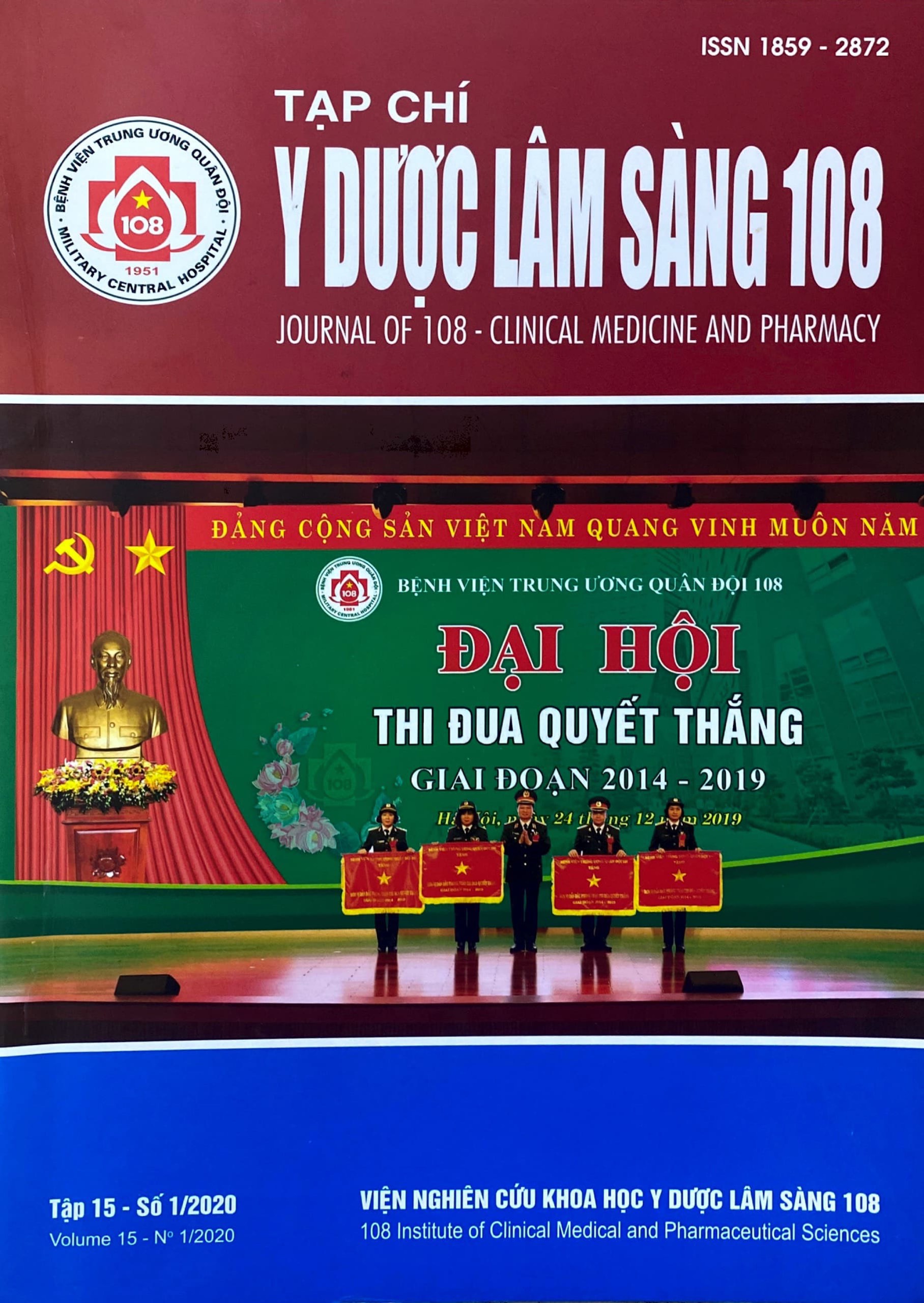Study on some changes in hemodynamic parameters after infusion by PiCCO method in the treatment of surgical septic shock
Main Article Content
Keywords
Abstract
Objective: To investigate some changes in hemodynamic parameters after infusion by PiCCO method in the treatment of surgical septic shock. Subject and method: 40 patients with septic shock were monitored continuously with PiCCO method at Viet Duc Hospital from January 2012 to December 2014. Method: A descriptive, cross-sectional study. Result: Based on some parameters of the PiCCO method, after 1st infusion, CI increased from 3.16 ± 1.24l/min/m2 to 4.52 ± 0.87l/min/m2; GEDVI increased from 573.55 ± 169.35ml/m2 to 826.3 ± 246.06ml/m2; SVV
decreased from 15.13 ± 7.26% to 13.76 ± 8.65%. After 2nd infusion, CI increased from 3.84 ± 1.78l/min/m2 to 4.61 ± 1.24l/min/m2; GEDVI increased from 767.5 ± 245.12ml/m2 to 809.65 ± 216.06ml/m2; SVV decreased from 14.12 ± 5.43% to 12.67 ± 7.35%. After 3rd infusion, CI increased from 4.62 ± 2.04l/min/m2 to 4.69 ± 1.95l/min/m2; GEDVI increased from 817.23 ± 190.22ml/m2 to 873.12 ± 206.39ml/m2; SVV decreased from 12.36 ± 7.45% to 10.62 ± 5.61%. After 4th infusion, CI increased from 3.84 ± 2.78l/min/m2 to 4.14 ± 2.24l/min/m2; GEDVI increased from 834.67 ± 285.45ml/m2 to 856.47 ± 219.25ml/m2; SVV decreased from 13.42 ± 7.78% to 11.21 ± 6.44%. Conclusion: In treating septic shock, the PiCCO method is valuable in treating patients with sedation.
Article Details
References
1. Lê Trí Hải (2007) Nghiên cứu hiệu quả sử dụng kết hợp thuốc vận mạch trong điều trị sốc nhiễm khuẩn tại hai Khoa Cấp cứu và Điều trị tích cực. Luận văn tốt nghiệp bác sỹ chuyên khoa cấp II, Trường Đại học Y Hà Nội, tr. 42-64.
2. Vũ Hải Yến (2012) Nghiên cứu đặc điểm lâm sàng- cận lâm sàng và kết quả của liệu pháp điều trị sớm theo mục tiêu ở bệnh nhân sốc nhiễm khuẩn. Luận văn thạc sỹ học, Trường Đại học Y Hà Nội, tr. 34-55.
3. Trần Duy Anh (2009) Thuốc vận mạch và cường tim dùng trong hồi sức cấp cứu. Giáo trình hồi sức cấp cứu. Nhà xuất bản Quân đội nhân dân, tr. 34.
4. Ngô Trung Dũng (2013) Đánh giá vai trò độ bão hòa oxy máu tĩnh mạch trung tâm trong hướng dẫn điều trị bệnh nhân sốc nhiễm khuẩn. Luận văn thạc sỹ y học, Trường Đại học Y Hà Nội, tr. 28-38.
5. Phạm Tuấn Đức (2011) Đánh giá thay đổi vận chuyển ôxy và tiêu thụ ôxy trên bệnh nhân sốc nhiễm khuẩn. Luận văn thạc sỹ y học, Trường Đại học Y Hà Nội, tr. 28-46.
6. Goepfert MS, Reuter DA et al (2007) Goal directed fluid management reduces vasopressor and catecholamine use in surgery patients. Intensive Care Med 33: 96-103.
7. Ichinose F, Buys Es, Neilan Tg (2007) Cardiomyocyte-specific overexpression of nitric oxide synthase 3 prevents myocardial dysfunction in murine models of septic shock. Circ Res 100: 130-139.
8. Cinel I, Dellinger RP (2007) Advances in pathogenesis and management of sepsis. Curr Opin Infect Dis 20: 345.
9. Parker MM, Shelhamer JH, Bacharach SL et al (1984) Profound but reversible myocardial depression in patients with septic shock. Ann Intern Med 100: 483-490.
10. Trof RJ, Beishuizen A, Cornet AD, Wit RJ, Girbes AR, Groeneveld AB (2012) Volume-limited versus pressure-limited hemodynamic management in septic and nonseptic shock. Critical Care Medicine 40(4): 1177-1185.
11. Trof RJ, Danad I, Groeneveld AJ (2013) Global end-diastolic volume increases to maintain fluid responsiveness in sepsis-induced systolic dysfunction. BMC Anesthesiology 13(12): 201.
12. Cheng Li, Fu-qing Lin, Shu-kun Fu et al (2013) Stroke volume variation for prediction of fluid responsiveness in patients undergoing gastrointestinalsurgery. Int J Med Sci 10(2): 148-155.
13. Dellinger RP, Levy MM, Rhodes A (2012) Surviving Sepsis campaign: International guidelines for management of severe sepsis and septic shock. Intensive Care Med 39(2): 165-228.
 ISSN: 1859 - 2872
ISSN: 1859 - 2872
